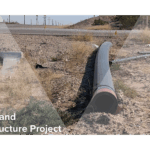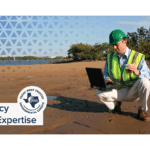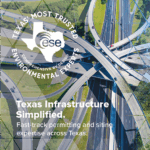
In any real estate transaction or property development project, understanding the environmental conditions of a site is crucial. A Phase 1 Environmental Site Assessment (ESA) is a critical step in evaluating the potential risks and liabilities associated with a property. Longview Phase 1 Environmental Site Assessments provide clients with the necessary information to make informed decisions regarding property acquisition, development, or financing.
Understanding the Purpose of Phase 1 Environmental Site Assessments
Before delving into the details, it is essential to understand the purpose of a Phase 1 ESA. The primary objective is to assess the potential presence of hazardous materials or environmental contamination on a property. By identifying any issues early on, clients can mitigate potential liabilities, ensure regulatory compliance, and protect the health and safety of occupants.
The Importance of Environmental Site Assessments
Phase 1 ESAs are crucial for various reasons. Firstly, they help buyers or developers understand the environmental risks associated with a property. They provide insights into potential contamination, which can directly affect property value, future plans, and legal obligations.
Secondly, environmental site assessments are often required by financial institutions or lenders before approving loans. Banks want to ensure that the property does not have any significant environmental liabilities that could impact its value or future saleability.
Lastly, conducting a Phase 1 ESA demonstrates an organization’s commitment to corporate social responsibility. By conducting due diligence, companies can avoid unknowingly contributing to environmental problems and create a safer, healthier environment for future generations.
Key Components of a Phase 1 Assessment
A Phase 1 ESA involves a comprehensive investigation that considers various components. These typically include:
- Review of historical records, including aerial photographs, maps, and city directories to identify past uses of the property.
- An on-site inspection to assess current conditions, identify potential contamination sources, and evaluate existing infrastructure.
- An analysis of surrounding properties to determine if any activities or conditions could potentially impact the subject property.
- Interviews with current or previous property owners, tenants, and occupants to gather additional information about the property’s history.
Furthermore, a Phase 1 ESA may involve soil and groundwater sampling to test for the presence of hazardous substances. This testing is conducted by certified environmental professionals using specialized equipment and techniques.
In addition, the assessment may also include a review of relevant regulatory documents, such as permits and compliance records, to ensure that the property has been operated in accordance with applicable environmental laws and regulations.
Moreover, the Phase 1 ESA report typically includes a detailed analysis of the findings, recommendations for further investigation or remediation if necessary, and a summary of potential environmental liabilities associated with the property.
It is important to note that Phase 1 ESAs are not intended to provide a guarantee that a property is free of environmental contamination. Instead, they serve as a valuable tool for identifying potential risks and informing decision-making processes.
The Process of Conducting a Longview Phase 1 Environmental Site Assessment
Carrying out a Longview Phase 1 ESA involves a systematic approach that considers a range of factors. This ensures a comprehensive evaluation of the property’s environmental conditions and potential risks. The key steps in the process include:
Initial Site Inspection and Evaluation
During the initial site inspection, environmental consultants visit the property to conduct a visual assessment and document any potential environmental concerns. This includes examining the property’s buildings, storage areas, machinery, and assessing the general condition of the site.
Consultants also inspect adjacent properties to identify any potential sources of contamination that may impact the subject property.
Historical Review of the Site
Understanding the history of a property is crucial in evaluating potential environmental risks. Consultants conduct a thorough review of historical records, including previous land uses, permits, and any reported environmental incidents. This helps identify whether past activities on or near the property may have contributed to contamination.
Interviewing Key Individuals
Consultants often conduct interviews with current and past property owners, tenants, or occupants. These interviews help gather information regarding the property’s history, past uses, presence of any storage tanks or hazardous materials, and any known spills or releases that may have occurred. Insights from these interviews can aid the understanding and assessment of potential environmental risks.
Interpreting the Results of a Phase 1 Environmental Site Assessment
Interpreting the results of a Phase 1 ESA involves assessing potential environmental risks and making appropriate recommendations for further investigation or action.
Identifying Potential Environmental Risks
Based on the findings of the Phase 1 ESA, consultants identify any potential environmental risks. These may include the presence of underground storage tanks, contaminated soil, hazardous waste, or proximity to industries that pose environmental risks.
By identifying these risks early on, clients can make informed decisions regarding property acquisition, development plans, or environmental remediation, if necessary.
Recommendations for Further Investigation
If the Phase 1 ESA identifies potential environmental risks, consultants provide recommendations for additional investigations or assessments required to quantify and mitigate those risks. This may include Phase 2 environmental site assessments, which involve sampling and analysis of soil, groundwater, or other media to confirm the presence and extent of contamination.
Consultants also recommend remedial actions if contamination is confirmed, ensuring compliance with applicable regulations and best practices.
Legal and Regulatory Aspects of Environmental Site Assessments
Understanding the legal and regulatory aspects of environmental site assessments is crucial to avoid potential legal implications and ensure compliance with applicable laws.
Compliance with Environmental Laws and Regulations
Conducting a Phase 1 ESA helps ensure compliance with environmental laws and regulations. Environmental consultants consider federal, state, and local regulations, including those related to hazardous substances, land use, and site remediation, to assess whether a property meets all applicable requirements.
Failing to comply with environmental laws can result in legal consequences, financial liabilities, and reputational damage.
Potential Legal Implications of Site Contamination
Site contamination can have severe legal implications, especially if it affects human health or the environment. Identifying and addressing contamination during a Phase 1 ESA is crucial to mitigate potential legal liabilities.
Consulting with legal professionals with expertise in environmental law can help navigate potential legal issues and ensure compliance with applicable regulations.
The Role of Environmental Consultants in Phase 1 Assessments
Environmental consultants play a vital role in the successful execution of Phase 1 Environmental Site Assessments. Their expertise and knowledge help clients navigate potential environmental risks and comply with legal requirements.
Selecting a Qualified Environmental Consultant
Choosing the right environmental consultant is essential for a thorough and accurate Phase 1 ESA. Clients should consider factors such as the consultant’s experience, qualifications, and expertise in regulatory compliance and site assessments.
How Consultants Facilitate the Assessment Process
Environmental consultants guide clients through the entire Phase 1 ESA process, from initial inspection to final report. They coordinate with various stakeholders, including property owners, tenants, lenders, and legal professionals, to ensure a comprehensive assessment.
Furthermore, consultants provide clear and concise reports that highlight potential environmental risks and recommendations for further action. These reports serve as valuable tools for decision-making, risk management, and complying with regulatory requirements.
By conducting Longview Phase 1 Environmental Site Assessments, clients can gain valuable insights into the environmental conditions of properties. These assessments help mitigate potential risks, protect investments, and ensure compliance with environmental laws and regulations. With the assistance of experienced environmental consultants, clients can make informed decisions, safeguard their interests, and contribute to a sustainable future.
Ready to ensure your property is environmentally sound and compliant with all regulations? Look no further than ESE Partners, your trusted experts in environmental consulting. With a commitment to responsibly moving business forward and a wealth of experience in environmental problem-solving, our team at ESE Partners is equipped to handle the complexities of your Phase 1 Environmental Site Assessments. From our headquarters in Houston to our offices across Texas, we offer innovative, sustainable solutions tailored to the unique needs of your industry. Don’t let environmental risks stand in the way of your progress. Request A Proposal today and partner with us for a brighter, more sustainable future.








